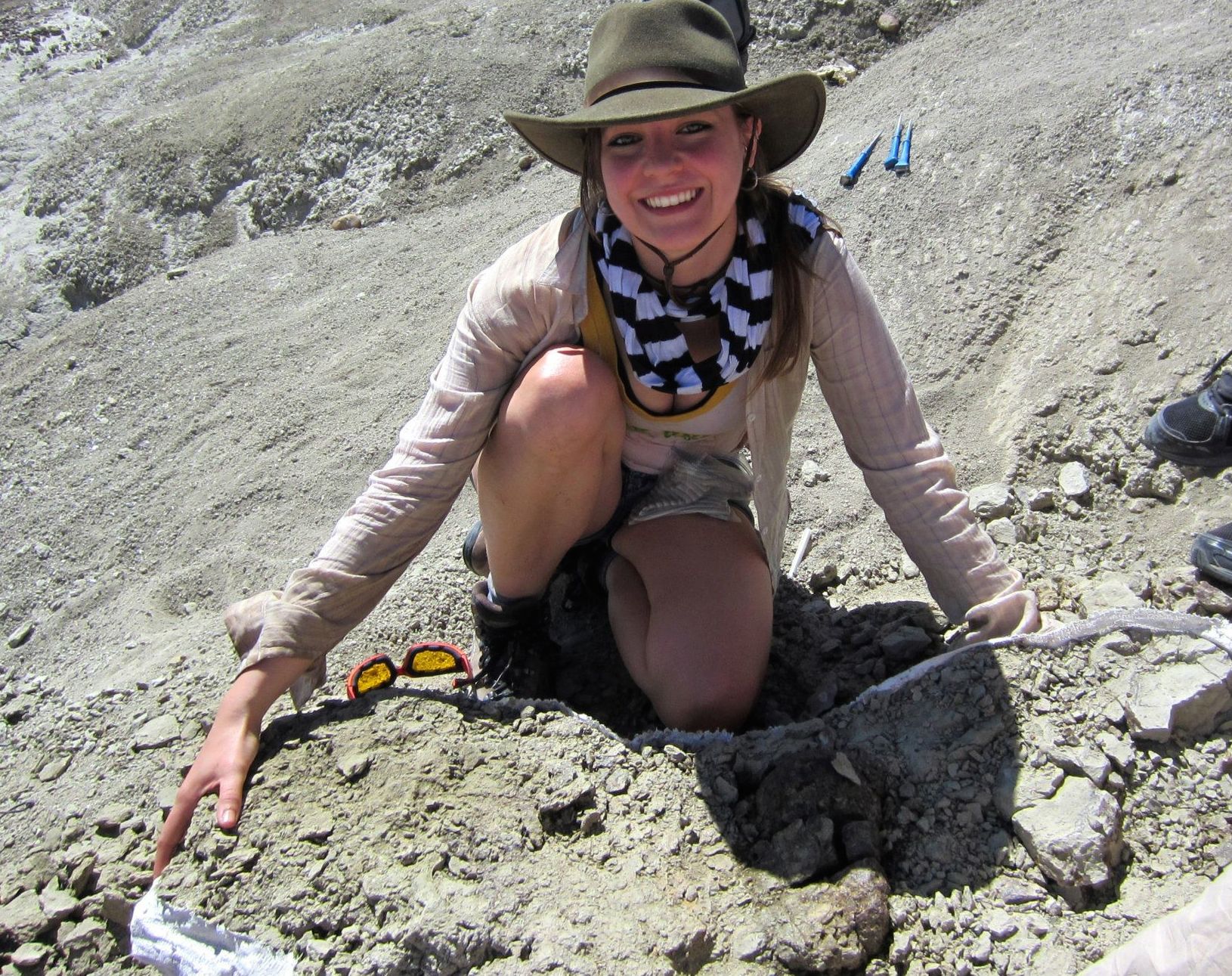Jennifer Hall is a paleoartist, which means she makes scientifically accurate illustrations of animals that died long before humans were even a twinkle in evolution’s eye. But amidst the science, she works in a little whimsy too. In an illustration she made last year of a newly discovered, super-massive dinosaur species called Dreadnoughtus (pictured above), she painted little birds cleaning the dino’s back. (The paleontologist for whom she made the illustration, Kenneth Lacovara of Drexel University, confirmed that could have happened in real life.)A chat with Hall revealed a diverse educational background and a whimsical, winding path to paleoart, beginning with fancy pastries.
So you started as a pastry artist.
I was a pastry artist for about 10 years. I started in high school. I was making cookies that look like stuff and really fancily decorated wedding cakes.
Ultimately, I decided that 10 years in the food industry was as long as I wanted to do it, full-time. I still do it for parties and as a hobby. But as a job, I would like to say that the sun has set on that part of my life.
Extinct tapir. Digital painting, 2014. (Illustration: Jennifer Hall)
How sauropods die and get buried. Graphite and chalk on paper, modified in Photoshop, 2014. (Illustration: Jennifer Hall)
Extinct sea turtle. Graphite and chalk on paper, 2014. (Illustration: Jennifer Hall)
Taxidermied European starling. (Illustration: Jennifer Hall)
A cake from Hall’s pastry days. (Photo: Jennifer Hall)
Lithograph from Hall’s art-school work. (Lithograph: Jennifer Hall)
What’s the difference between being a paleoartist and being a regular artist?
A regular artist can do abstract work, but a paleoartist has to adhere to a fixed set of guidelines in that we make as many fact-based decisions as we can. That doesn’t mean we can’t be creative. A good paleoartist has a nice balance between art and science, but it should be educational in nature more than it is anything else.
I’ve done fine art and shown in galleries, but I think my higher calling is in science.
How did you get started doing paleoart?
I went to art school. I was a print-making major in Philadelphia and then I went to the University of Pennsylvania and studied geology there. I saw an opportunity to incorporate my art training with my education in science and biology.

At first, I was just doing really fancy illustrations for lab papers and field notes and assignments and then, I finally got it into my head that I could ask my teachers if I could do some figures for their papers. One of my teachers at the time, who was teaching a class on the evolution of dinosaurs, said, “Yes, I’d love it if you illustrated one of my papers.”
He introduced me to Bob Walters and Tess Kissinger, who do dinosaur-based murals for museums. I worked with them on a few projects. The rest is history. I did a lot of networking and have been trying to create a niche for myself in this community ever since.
Have you always been paid for your paleoart? Or did you have to start out doing some things for free?
The first paper that I illustrated, I asked if instead of writing a final term paper, I could read theirs and then do extensive illustrations for it. They said, “Yes.” So I was getting more than just the experience out of it.
I did start as a paid artist, working for Walters and Kissinger. They were very good about compensating me for my time. They were also very good about giving me not just interesting assignments, but great assignments for building up my portfolio. Lots of different animals.
Does all of the income you need come from your art?
It didn’t, at first. I was a full-time pastry artist by day and then moonlighting as a science illustrator.
Then, a couple years ago, I thought, I really want to devote my full time and attention to this. So I took some savings and took a few more classes. I’d already graduated. I just wanted to bone up. I just gave it my best shot.
I’m living in Los Angeles now and I am making a living off of my illustration work. I also work part-time, teaching taxidermy classes. I saw that [Pacific Standard] interviewed one of my friends, Katie Innamorato.
That’s very useful for the science illustration thing because it’s anatomy art. So yeah, at the moment, I am able to support myself, which is a lot of fun and very cool and still tenuous at times, but definitely worth it.
Is all of your art about anatomy and animals?
It’s mostly animal-based and anatomically oriented. It’s not just from the Mesozoic, not just the dinosaurs, but extinct species. And then I do a lot of work on animals that are related to extinct species. In the taxidermy studio, I do a lot of work with birds, which are the only living dinosaurs that we have, so there’s a nice connection there. I get to study the anatomy of living dinosaurs to get some takeaways about what I can do with my artwork on extinct dinosaurs.
Is there anything annoying about being a paleoartist?
I do a lot of different things to make a living. Every artist has to make concessions to make money every once in a while.
But the most irritating, frustrating thing is, I will never know what these animals look like. The best I can do is what I’m already doing. I will never get to see Dreadnoughtus and know, oh, my gosh, I was right.
How Do You Make a Living? is an ongoing Q&A series.










